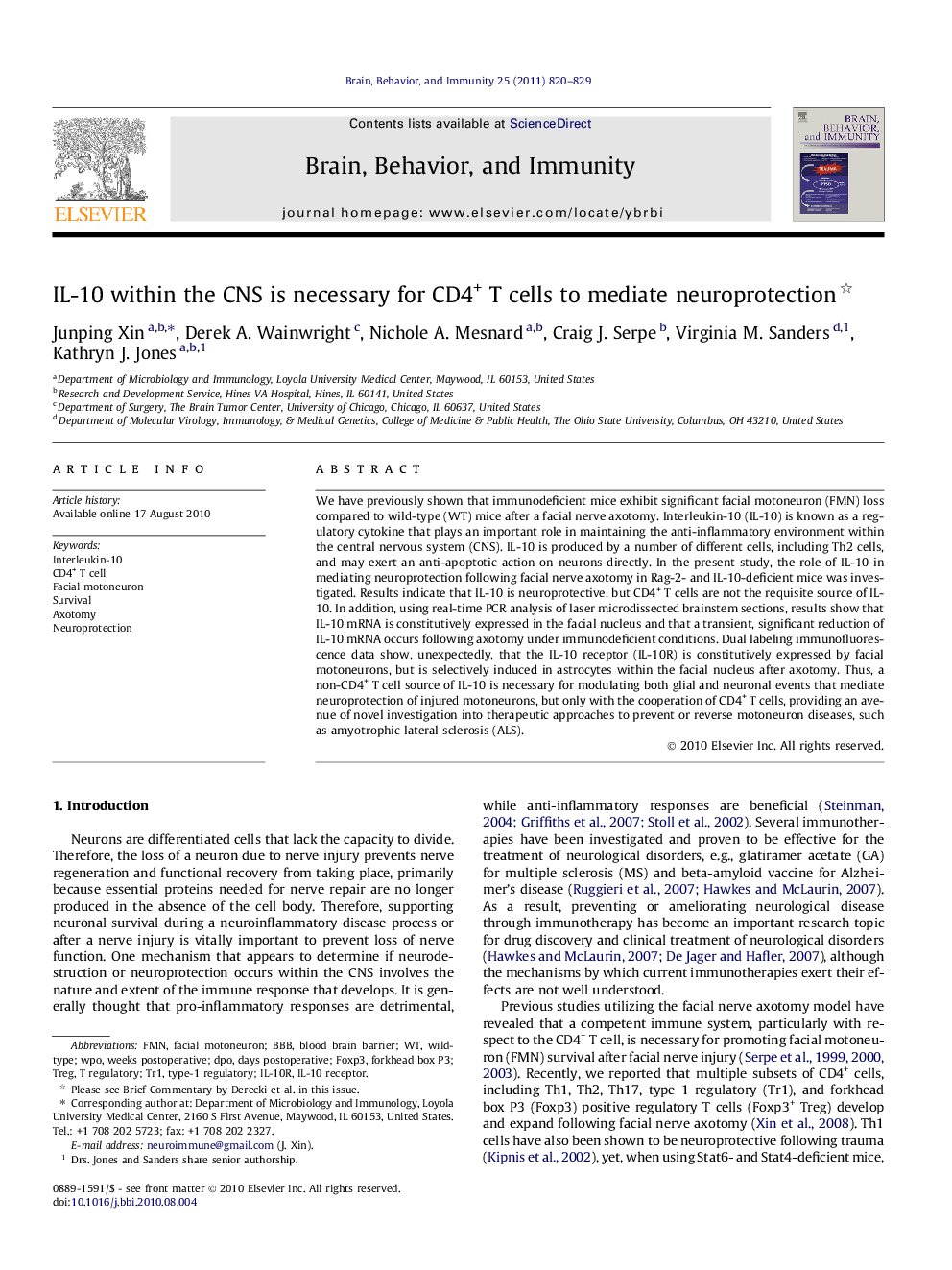| Article ID | Journal | Published Year | Pages | File Type |
|---|---|---|---|---|
| 922534 | Brain, Behavior, and Immunity | 2011 | 10 Pages |
We have previously shown that immunodeficient mice exhibit significant facial motoneuron (FMN) loss compared to wild-type (WT) mice after a facial nerve axotomy. Interleukin-10 (IL-10) is known as a regulatory cytokine that plays an important role in maintaining the anti-inflammatory environment within the central nervous system (CNS). IL-10 is produced by a number of different cells, including Th2 cells, and may exert an anti-apoptotic action on neurons directly. In the present study, the role of IL-10 in mediating neuroprotection following facial nerve axotomy in Rag-2- and IL-10-deficient mice was investigated. Results indicate that IL-10 is neuroprotective, but CD4+ T cells are not the requisite source of IL-10. In addition, using real-time PCR analysis of laser microdissected brainstem sections, results show that IL-10 mRNA is constitutively expressed in the facial nucleus and that a transient, significant reduction of IL-10 mRNA occurs following axotomy under immunodeficient conditions. Dual labeling immunofluorescence data show, unexpectedly, that the IL-10 receptor (IL-10R) is constitutively expressed by facial motoneurons, but is selectively induced in astrocytes within the facial nucleus after axotomy. Thus, a non-CD4+ T cell source of IL-10 is necessary for modulating both glial and neuronal events that mediate neuroprotection of injured motoneurons, but only with the cooperation of CD4+ T cells, providing an avenue of novel investigation into therapeutic approaches to prevent or reverse motoneuron diseases, such as amyotrophic lateral sclerosis (ALS).
Research highlights► IL-10 receptor (IL-10R) is constitutively expressed by facial motoneurons. ► Facial nerve axotomy selectively induces IL-10R expression in astrocytes. ► Non CD4+ T cell-derived IL-10 is necessary for the survival of injured neurons.
